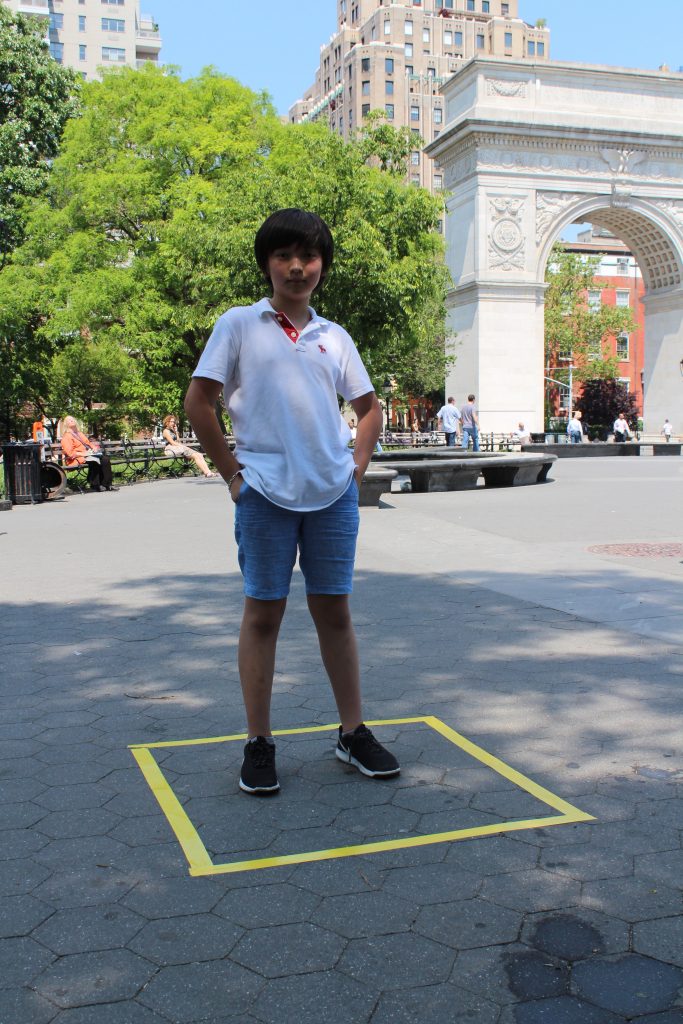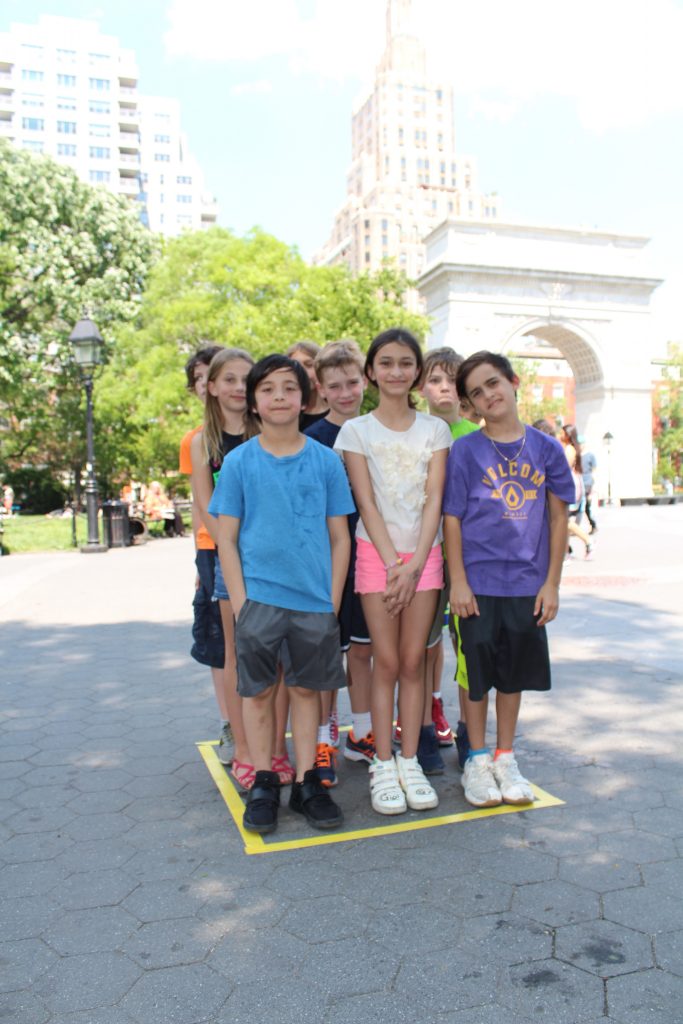“Almost everyone who has tried to make a crowd estimate has a vested interest in what the outcome of the estimate is”
–Charles Seife, Professor of Journalism and Mathematician at NYU.
4th Graders use the Jacob’s Method of Crowd Counting to Estimate the Protest Crowd at Washington Square Park on Wednesday, January 25th, 2017.
On Wednesday evening, January 25th, 2017, a protest crowd gathered at Washington Square Park in response to President Trump’s executive orders on immigration that he signed earlier that day. The New York Post reported that “Hundreds Gathered” (Marino & Perez, 1/25/17). The New York Observer (Toure, 1/25/17), called it a “Massive Demonstration”. Vogue (Codinha, 1/26/17), reported that “Thousands of New Yorkers Gathered”. So just how many people showed up for this rally? LREI fourth graders wanted to find out.
The Jacob’s Method of Crowd Counting
Herbert Jacobs, a University of California journalism professor in the 1960’s, devised a basic density rule that has been widely accepted. Watching students protesting the Vietnam War from his office window, Jacobs saw that they had gathered on a plaza that was arranged in a grid. He counted those in a few squares to get an average number per square and multiplied that by the total number of squares. He also came up with a basic density rule that states a “light crowd” has one person per square meter, and doubled that for a “dense crowd”. A “heavy crowd” would have as many as four people per square meter, according to this method.






